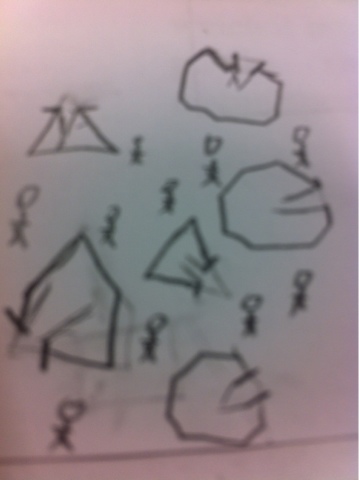The winner of the bid was Bendetto&Son inc at 224,025$ while Aguilar and Coleman charged 250,875$ and 261,000$ respectively.
We polled 200 people to see what they would like to have in 5 different catagories in correlation to how often they would use it. Those who would use the facilities more often had a vote worth more than those who wouldn't. By tallying up the votes we came to the conclusion the basketball courts, the softball field, the track, and the playground would be the most used.
Luckily we had enough of the park undeveloped, benches placed in correct areas, light posts with every bench, two bathrooms, and enough of the buget left over to give students at Rodriguez new iPads. Of course we didn't, but we could have if we wanted to.






